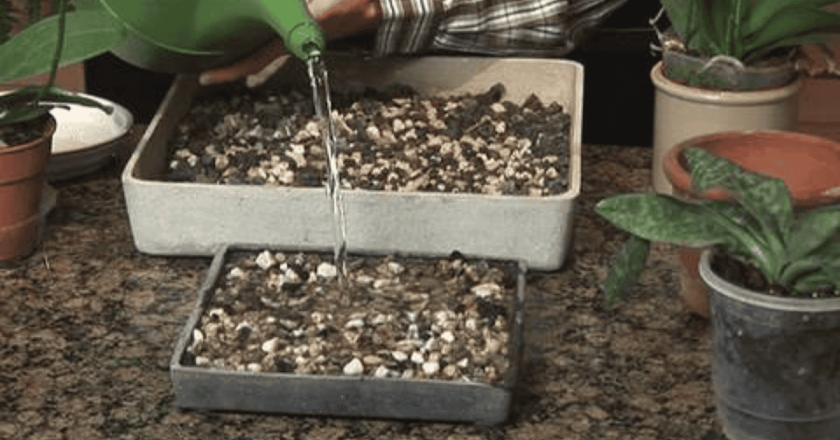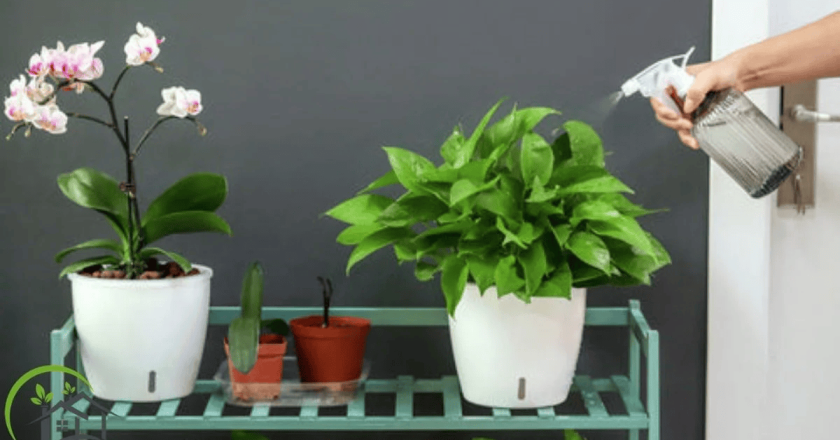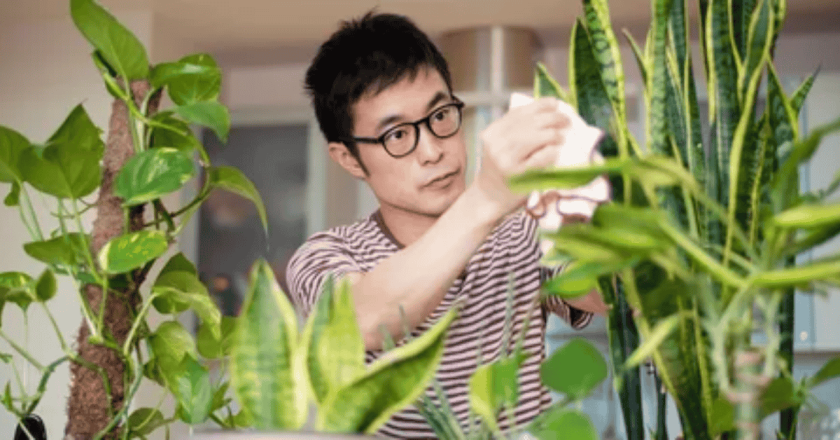Most plant owners agree on one thing: repotting can be surprisingly nerve-wracking. You’d think moving a plant into a bigger pot with fresh soil should always be a good thing. But here’s the reality—Re-potting Mistakes are incredibly common. Some of them are harmless, others can set your plant back for months. And, in some cases, the best care you can give is actually not repotting at all.
I’ve made most of these mistakes myself—choosing the wrong pot size, tugging too hard at roots, or deciding to “freshen things up” at exactly the wrong season. If you’ve ever watched your plant droop sadly after what was supposed to be an upgrade, you’ll know what I mean.
This guide takes a detailed look at common repotting errors, how to spot the signs your plant needs repotting, and those overlooked times when it’s better to leave things alone. Along the way, I’ll share stories, practical advice, and plenty of little insights that most guides skip over.
Why Repotting Isn’t Always the Answer
Repotting has a reputation as a cure-all. Leaves yellowing? Roots peeking out? Just repot. But sometimes that instinct causes more harm than good. Plants actually prefer stability, and every repotting comes with stress.
One of the biggest plant repotting mistakes is assuming growth struggles always mean a pot problem. In reality, issues like low light, irregular watering, or poor feeding habits often mimic the symptoms. Jumping to a repot can trigger plant stress after repotting without addressing the actual cause.
Take the money tree, for example. They droop dramatically when overwatered, which looks a lot like root binding. But in many cases, the roots are fine—it’s the watering that’s off.
The Most Common Repotting Errors
Over the years, I’ve noticed a few mistakes that come up again and again. Some are subtle; others are so common they almost feel like a rite of passage. Let’s go through them.
1. Choosing the Wrong Pot Size
It feels logical to pick a much larger pot so the plant can “grow into it.” But this often causes overpotting issues. The soil stays wetter than the roots can manage, leading to rot. The correct pot size for plants is usually just one or two inches wider than the current container.
2. Disturbing the Roots Too Aggressively
We’ve all done it—yanking at roots or breaking off chunks while trying to loosen them. That’s classic root damage repotting. Gentle teasing of roots is fine; tearing them apart is not.
3. Using the Wrong Soil
Not all soil is equal. Succulents in moisture-retentive soil? Recipe for disaster. One of the easiest soil mistakes when repotting is not matching the soil to the plant type.
4. Ignoring Timing
The best time to repot plants is usually during their active growth phase, spring through early summer. Doing it in autumn or winter, when many plants slow down, is one of those Re-potting Mistakes that often backfire.
5. Forgetting Aftercare
Even with a perfect repot, skipping proper recovery steps can cause problems. Plant care after repotting includes watering carefully, placing in stable light, and avoiding fertilizer until the plant settles.
When NOT to Repot Plants
Here’s where nuance matters. Sometimes, repotting isn’t the solution. A few scenarios:
-
During Dormancy, Plants like peace lilies or Christmas cactus dislike disruption in their resting phases. (Here’s a Christmas cactus care guide if you want to know how they handle seasonal cycles.)
-
Right After Buying: Many people rush to repot new plants, but moving them twice in quick succession adds unnecessary shock.
-
When Only the Leaves Look Unhappy: If roots aren’t actually crowded, repotting won’t solve drooping or browning.
This is why understanding when not to repot plants is just as important as knowing when you should.
Spotting the Signs Your Plant Needs Repotting
So how do you know it’s really time? Here are some classic indicators:
-
Roots circling the pot or growing through drainage holes (rootbound plant repotting).
-
The soil dries out almost immediately after watering.
-
The plant is tipping over because it’s top-heavy.
-
Water is sitting on the surface without soaking in.
But be cautious. Sometimes, one sign alone isn’t enough. That’s where observation and patience come in.
Indoor Plant Repotting Guide
Repotting indoors has its quirks. Limited space, controlled light, and artificial heating make plants more sensitive. A simple indoor plant repotting guide usually includes:
-
Pick a slightly larger pot.
-
Using fresh, plant-specific soil.
-
Watering lightly after.
-
Keeping the plant out of direct sun for a week.
Bathrooms, for instance, can create surprising challenges. High humidity helps, but low light can trick you into thinking repotting is needed when it’s not. (Here’s a list of plants perfect for bathrooms.)
Outdoor Plant Repotting Tips
Outdoors, the challenges shift. Pots dry faster in the wind and sun, and seasonal changes matter more. Outdoor plant repotting tips include timing with weather—never repot right before a heatwave or frost. Adding mulch helps reduce shock, too.
If you prefer plants that don’t demand frequent repotting outdoors, you’ll like this guide to low-maintenance outdoor plants.
Avoiding Transplant Shock
One of the hardest lessons is learning how to repot without shock. Even gentle repotting can leave plants sulking. To minimize avoiding transplant shock:
-
Water a day before repotting.
-
Handle roots gently.
-
Don’t fertilize right away.
-
Place the plant in similar light conditions after moving.
Think of it as easing them back into routine instead of throwing them into sudden change.
Repotting Tips for Beginners
If you’re just starting out, here are a few simple repotting tips for beginners:
-
Always have your tools ready—new pot, soil, gloves, water.
-
Never pick a pot that’s far larger than the old one.
-
Learn the plant’s growth cycle before repotting.
-
Watch how your plant reacts afterward; that’s feedback.
For beginners, especially, hardy species are more forgiving. Snake plants and peace lilies handle the process with more resilience than fussier plants.
Repotting Frequency and Routine
How often should you repot? The answer depends. Most plants are fine with every 1–2 years. Some grow so slowly that 3–4 years is enough. Understanding repotting frequency is about balancing root health with stability.
For office setups where repotting might not be practical often, these office plant suggestions are worth considering.
Repotting Do’s and Don’ts
Sometimes the clearest advice is a list:
Do:
-
Check roots before deciding.
-
Use clean pots and fresh soil.
-
Handle gently.
Don’t:
-
Overpot.
-
Repot during dormancy.
-
Fertilize immediately.
Simple, but often overlooked. And most Re-potting Mistakes come down to forgetting one of these basics.
🌱 Key Takeaways
-
Not every plant problem needs repotting. Many issues mimic root troubles but are really about light, water, or soil habits.
-
Overpotting is one of the biggest repotting mistakes. A pot that’s too large holds too much moisture and risks root rot.
-
Timing matters more than people think. The best time to repot plants is during active growth; avoid dormancy seasons.
-
Aftercare is half the process. Proper watering, patience, and no fertilizer right away prevent unnecessary plant stress after repotting.
-
Gentle handling wins. Avoid tearing roots, choose the right soil, and remember that stability is sometimes better than change.
🌿 Final Thought
Repotting should feel like a fresh start for your plant, not a punishment. But the truth is, too many of us rush into it. The difference between a thriving plant and one that sulks for weeks often comes down to avoiding simple Re-potting Mistakes. Learn when to act, when to wait, and above all, how to handle your plants with a little more patience. They’ll reward you with steady growth—and maybe even forgive you when you get it wrong.
❓ FAQs
1. What are the most common repotting mistakes?
Overpotting, damaging roots, using the wrong soil, and repotting at the wrong time are some of the biggest common repotting errors.
2. How do I know when my plant really needs repotting?
Signs your plant needs repotting include roots circling the pot, water draining too quickly, or soil that no longer absorbs water properly.
3. What’s the best time to repot plants?
Spring and early summer are ideal, since plants are in their active growth phase and recover more easily.
4. How can I avoid transplant shock when repotting?
Water a day before repotting, handle roots gently, and avoid fertilizer for a few weeks. These steps help with avoiding transplant shock.
5. Do all plants need repotting every year?
No. Repotting frequency varies—some plants thrive with yearly repotting, while slower growers may only need it every 3–4 years.




